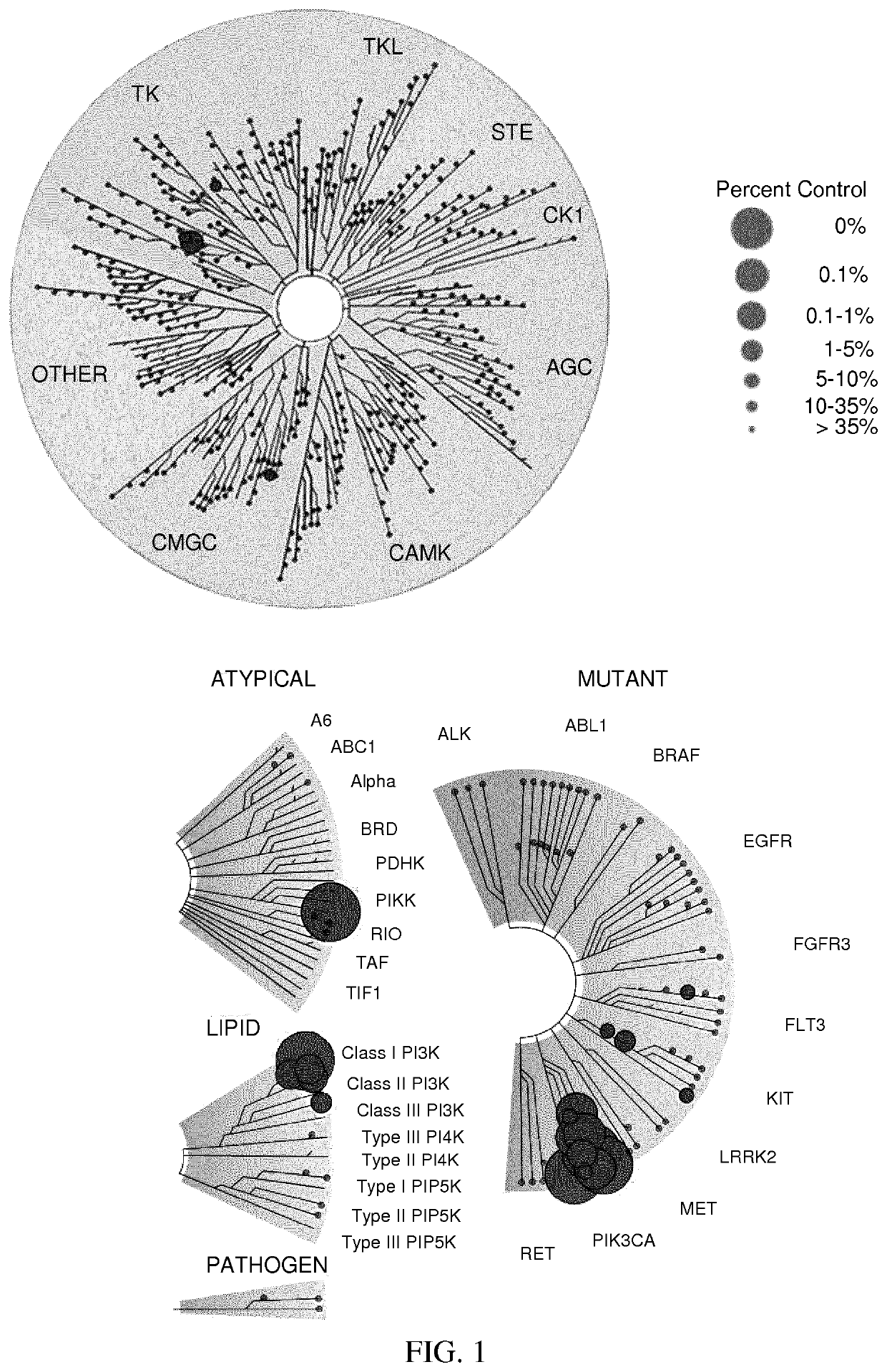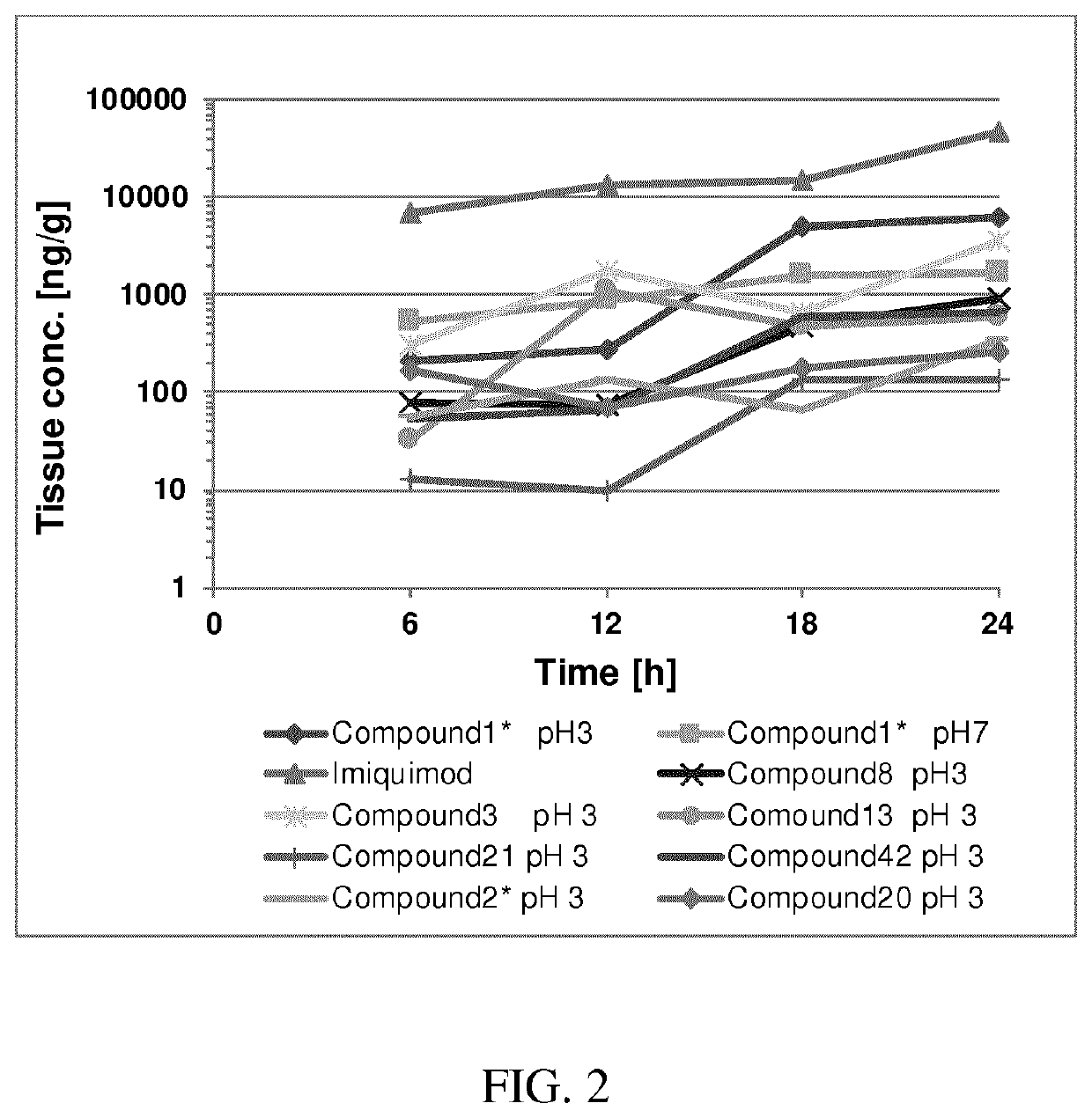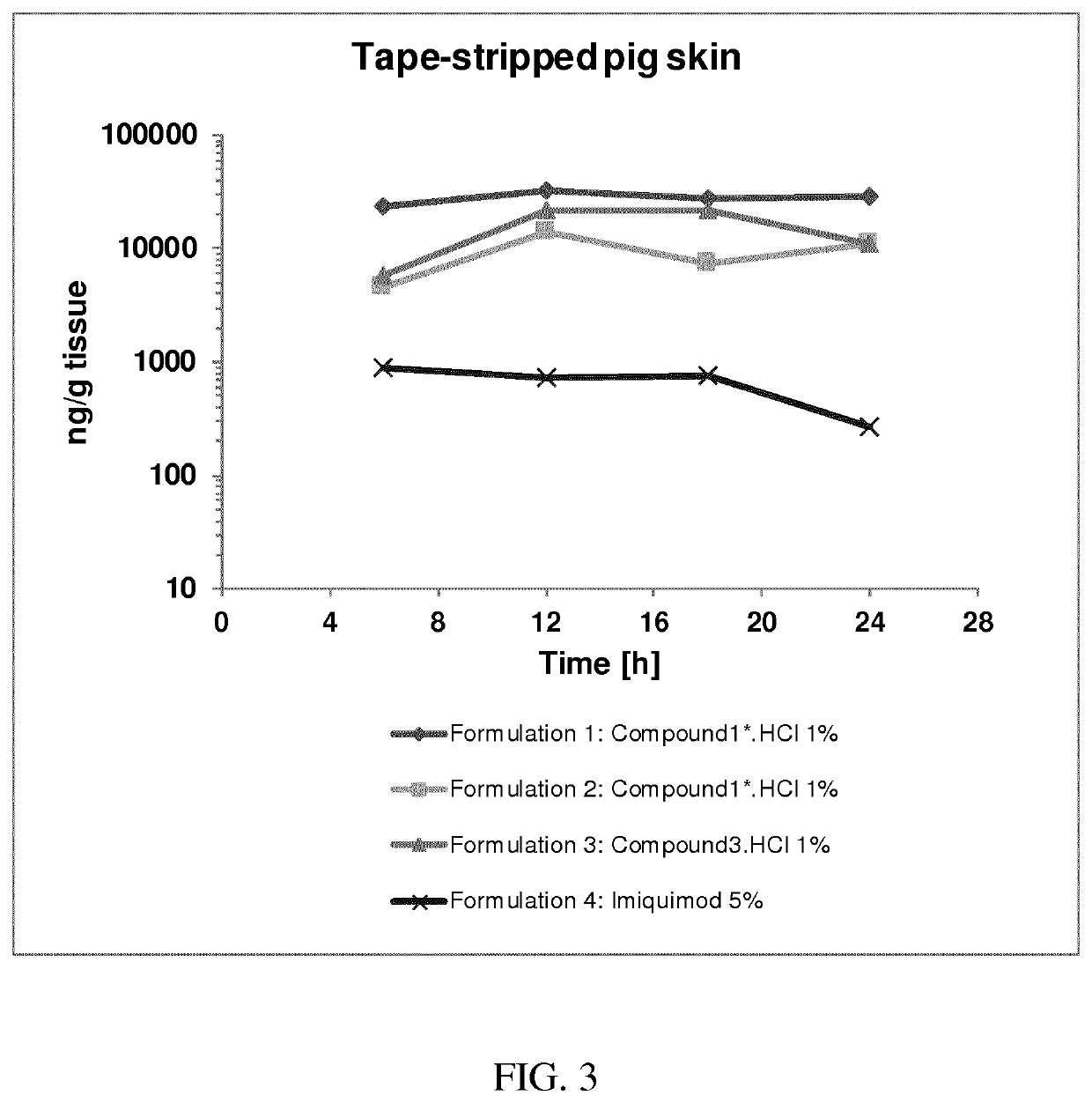Treatment of skin disorders
a skin disorder and skin technology, applied in dermatological disorders, drug compositions, organic chemistry, etc., can solve the problems of hamartomas throughout the body, emotional distress, and impairment of vision
- Summary
- Abstract
- Description
- Claims
- Application Information
AI Technical Summary
Benefits of technology
Problems solved by technology
Method used
Image
Examples
example 1
Preparation of Intermediate Compounds and of Compounds of the Invention
Preparation of Intermediate Compounds
[0329]The following methods were used to prepare the intermediates compounds used to produce compounds of formula (I). Said methods used to prepare said intermediates and the synthesis of the exemplified intermediates used for preparing the compounds of the present invention have already been described in WO 2016 / 075130 as well as in the application PCT / EP2017 / 025137 filed on May 17, 2017. Therein, these methods are numbered and referred to as “Method 1”, “Method 2” or the like, wherein the intermediates exemplified and synthesized by said methods are referred to as “i1”, “i2” or the like. Such numbering is used to distinguish the intermediates from the compounds of formula (I). When reference is made to the compounds of formula (I) a compound number such as “1”, “2”, “1*”, 2*” or the like without the prefix “i” is used. The same numbering concept as well as the same specific ...
example 2
In Vitro mTOR Binding Assay and in-Cell Western Blot
[0451]N-terminally GST-tagged mTOR (Cat. No. PR8683B; 0.45 mg / ml; truncated version: amino acids 1360-2549), Alexa Fluor® 647 labeled kinase Tracer 314 (Cat. No. PV6087), LanthaScreen Eu-anti-GST Tag antibody (Cat. No. PV5594) were purchased from Life Technologies. The 1×mTOR Kinase Buffer consists of 50 mM HEPES pH 7.5, 5 mM MgCl2, 1 mM EGTA, and 0.01% Pluronic F-127 (Sigma Cat. No. P2443-250G).
[0452]A 10-point 4-fold serial dilution (highest concentration at 10 μmol / L and lowest concentration at 40 pmol / L) of each compound was tested for mTOR binding in duplicate in a 384-well plate. To perform the LanthaScreen kinase binding assay 5 μl of the test compounds concentrated 3× the final concentration, 5 μl of 9 nM GST-mTOR / 6 nM Eu-anti-GST antibody mixture and 5 μl of 30 nM Tracer 314 solution were mixed together resulting to a final concentration of 3 nM GST-mTOR, 2 nM Eu-anti-GST antibody and 10 nM Trace...
example 3
[0469]A: Kinase Binding
[0470]In order to test binding of 1* to PI3K isoforms and related kinases, a biochemical assay was performed at DiscoveRx (Fremont, USA) (Table 13, Rows 1-7).
[0471]B: Kinase Inhibition
[0472]Furthermore, compound 1* and reference compounds were analyzed for their ability to inhibit kinase function of PIK3CA and related kinases (Proqinase, Germany) (Column3 of Table 13). Lipid kinases PIK3CA, PIK3CB, PIK3CG, PIK3CD, (PI3K α, β, γ and δδ), PIK3C2A, PIK3C2B, PIK3C2G, PIK3C3, PIK4B were tested in an ADP-Glo assay (Promega, USA). Protein kinases mTOR and DNAPK were tested in a radiometric 33P-γATP assay (33PanQinase® Activity Assay, Proqinase, Germany). IC50 values were measured by testing 10 semi-log concentrations of each compound in the range from 1×10-04 M to 3×10-09 M, in singlicate. Prior to testing, the compounds dissolved to 1×10-02M stock solutions in volumes of 100% DMSO as stated in the compound submission form (CSF). 100 1l of each stock solution were tr...
PUM
| Property | Measurement | Unit |
|---|---|---|
| time | aaaaa | aaaaa |
| time | aaaaa | aaaaa |
| chemical shift | aaaaa | aaaaa |
Abstract
Description
Claims
Application Information
 Login to View More
Login to View More - R&D
- Intellectual Property
- Life Sciences
- Materials
- Tech Scout
- Unparalleled Data Quality
- Higher Quality Content
- 60% Fewer Hallucinations
Browse by: Latest US Patents, China's latest patents, Technical Efficacy Thesaurus, Application Domain, Technology Topic, Popular Technical Reports.
© 2025 PatSnap. All rights reserved.Legal|Privacy policy|Modern Slavery Act Transparency Statement|Sitemap|About US| Contact US: help@patsnap.com



